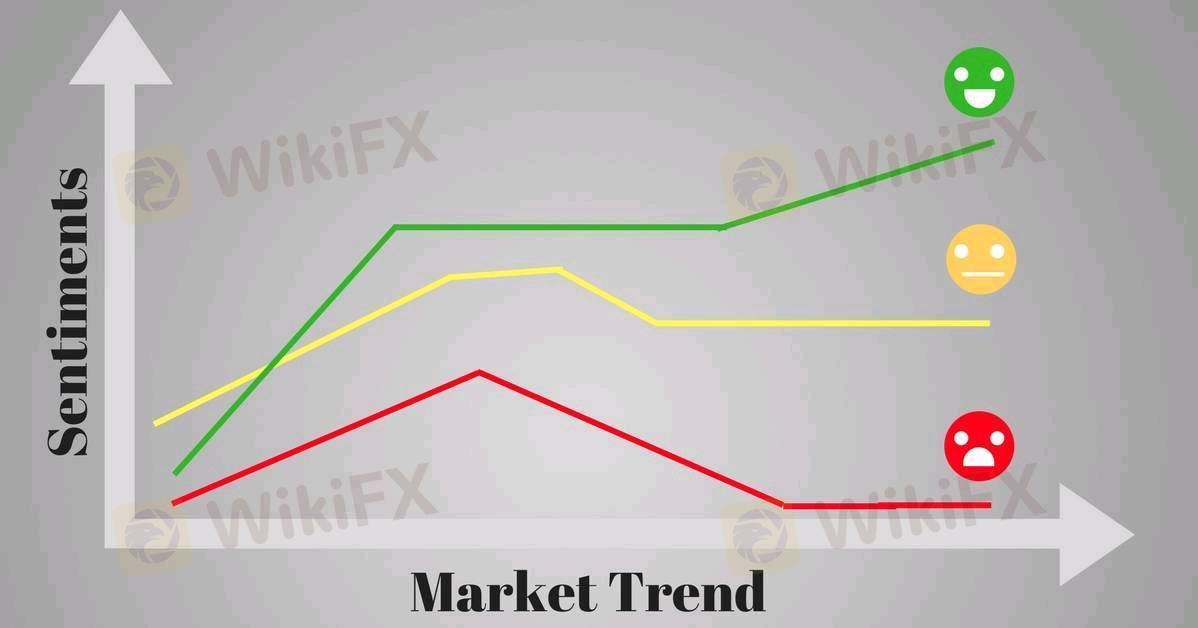
2025-01-31 19:54
Na indústriaSentiment analysis in Forex trading
#firstdealofthenewyearchewbacca#
Sentiment Analysis in Forex Trading
Sentiment analysis in Forex trading involves assessing the overall mood or positioning of traders in the market. It helps traders understand whether most participants are bullish (buying) or bearish (selling) on a particular currency pair.
---
Key Sentiment Indicators in Forex Trading
1. Commitment of Traders (COT) Report
Released weekly by the CFTC, it shows how commercial hedgers, large speculators, and retail traders are positioned.
If large speculators are heavily long on a currency, it signals bullish sentiment; if heavily short, it signals bearish sentiment.
Extreme positions often indicate a potential reversal.
2. Retail Trader Sentiment (Contrarian Indicator)
Many brokers provide retail trader positioning data (e.g., IG Client Sentiment, Myfxbook).
Retail traders tend to be wrong at major turning points, so extreme retail long positions may indicate a sell opportunity and vice versa.
3. Forex Market Sentiment Indexes
Sentiment indicators like DailyFX Sentiment Index, FXSSI, and Speculative Sentiment Index (SSI) provide insights into market positioning.
4. Options Market Data (Risk Reversals & Open Interest)
Options market data, such as risk reversals, can show whether traders are hedging against currency appreciation or depreciation.
High open interest in call options suggests bullish sentiment; high open interest in put options suggests bearish sentiment.
5. News Sentiment & Economic Reports
Analyzing central bank speeches, economic reports, and news headlines can reveal market expectations.
Positive surprises in economic data strengthen sentiment; negative surprises weaken it.
6. Volatility Index (VIX) & Risk-On/Risk-Off (RORO) Sentiment
The VIX (Fear Index) helps gauge risk appetite.
In risk-off environments (high VIX), traders buy safe-haven currencies like USD, JPY, and CHF.
In risk-on environments (low VIX), traders favor riskier currencies like AUD, NZD, and emerging market currencies.
---
How to Use Sentiment Analysis in Forex Trading
1. Identify Extreme Sentiment Levels
If sentiment is too bullish or bearish, it may signal a trend reversal (contrarian approach).
Example: If 90% of traders are long on EUR/USD, there’s a high chance of a price drop.
2. Confirm with Technical & Fundamental Analysis
Sentiment alone is not a trading signal. Combine it with support/resistance levels, moving averages, RSI, and economic data for stronger trade setups.
3. Trade with the Trend or Against It (Contrarian Strategy)
Trend Followers: If large institutions are increasing long positions, trade in the same direction.
Contrarian Traders: If retail traders are excessively long, consider shorting.
---
Example of Sentiment-Based Trade Setup
COT Report: Shows large speculators heavily short USD/JPY.
Retail Sentiment: 80% of traders are long (contrarian sell signal).
Technical Analysis: USD/JPY is at resistance.
Fundamental Analysis: BoJ signals policy tightening, supporting JPY strength.
Trade Idea: Short USD/JPY with a stop above resistance.
Gostar 0
bossbaby6527
المتداول
Discussões populares
Análise de mercado
Brasileiros FX
Análise de mercado
Brasileiros no FOREX
Análise de mercado
Don't buy Bitcoin now! Look at my review and description in the print!
Análise de mercado
análises do mercado financeiro ao vivo confira
Na indústria
Não consegui sacar meus peofits
Na indústria
Não é possível retirar
Categoria do mercado

Plataforma

Exibições

IB

Recrutamento

EA

Na indústria

Mercado

Índice
Sentiment analysis in Forex trading
 Nigéria | 2025-01-31 19:54
Nigéria | 2025-01-31 19:54#firstdealofthenewyearchewbacca#
Sentiment Analysis in Forex Trading
Sentiment analysis in Forex trading involves assessing the overall mood or positioning of traders in the market. It helps traders understand whether most participants are bullish (buying) or bearish (selling) on a particular currency pair.
---
Key Sentiment Indicators in Forex Trading
1. Commitment of Traders (COT) Report
Released weekly by the CFTC, it shows how commercial hedgers, large speculators, and retail traders are positioned.
If large speculators are heavily long on a currency, it signals bullish sentiment; if heavily short, it signals bearish sentiment.
Extreme positions often indicate a potential reversal.
2. Retail Trader Sentiment (Contrarian Indicator)
Many brokers provide retail trader positioning data (e.g., IG Client Sentiment, Myfxbook).
Retail traders tend to be wrong at major turning points, so extreme retail long positions may indicate a sell opportunity and vice versa.
3. Forex Market Sentiment Indexes
Sentiment indicators like DailyFX Sentiment Index, FXSSI, and Speculative Sentiment Index (SSI) provide insights into market positioning.
4. Options Market Data (Risk Reversals & Open Interest)
Options market data, such as risk reversals, can show whether traders are hedging against currency appreciation or depreciation.
High open interest in call options suggests bullish sentiment; high open interest in put options suggests bearish sentiment.
5. News Sentiment & Economic Reports
Analyzing central bank speeches, economic reports, and news headlines can reveal market expectations.
Positive surprises in economic data strengthen sentiment; negative surprises weaken it.
6. Volatility Index (VIX) & Risk-On/Risk-Off (RORO) Sentiment
The VIX (Fear Index) helps gauge risk appetite.
In risk-off environments (high VIX), traders buy safe-haven currencies like USD, JPY, and CHF.
In risk-on environments (low VIX), traders favor riskier currencies like AUD, NZD, and emerging market currencies.
---
How to Use Sentiment Analysis in Forex Trading
1. Identify Extreme Sentiment Levels
If sentiment is too bullish or bearish, it may signal a trend reversal (contrarian approach).
Example: If 90% of traders are long on EUR/USD, there’s a high chance of a price drop.
2. Confirm with Technical & Fundamental Analysis
Sentiment alone is not a trading signal. Combine it with support/resistance levels, moving averages, RSI, and economic data for stronger trade setups.
3. Trade with the Trend or Against It (Contrarian Strategy)
Trend Followers: If large institutions are increasing long positions, trade in the same direction.
Contrarian Traders: If retail traders are excessively long, consider shorting.
---
Example of Sentiment-Based Trade Setup
COT Report: Shows large speculators heavily short USD/JPY.
Retail Sentiment: 80% of traders are long (contrarian sell signal).
Technical Analysis: USD/JPY is at resistance.
Fundamental Analysis: BoJ signals policy tightening, supporting JPY strength.
Trade Idea: Short USD/JPY with a stop above resistance.
Gostar 0
Também quero comentar.
Perguntar
0Comentários

Ainda não há comentários. Faça o primeiro.

Perguntar
Ainda não há comentários. Faça o primeiro.